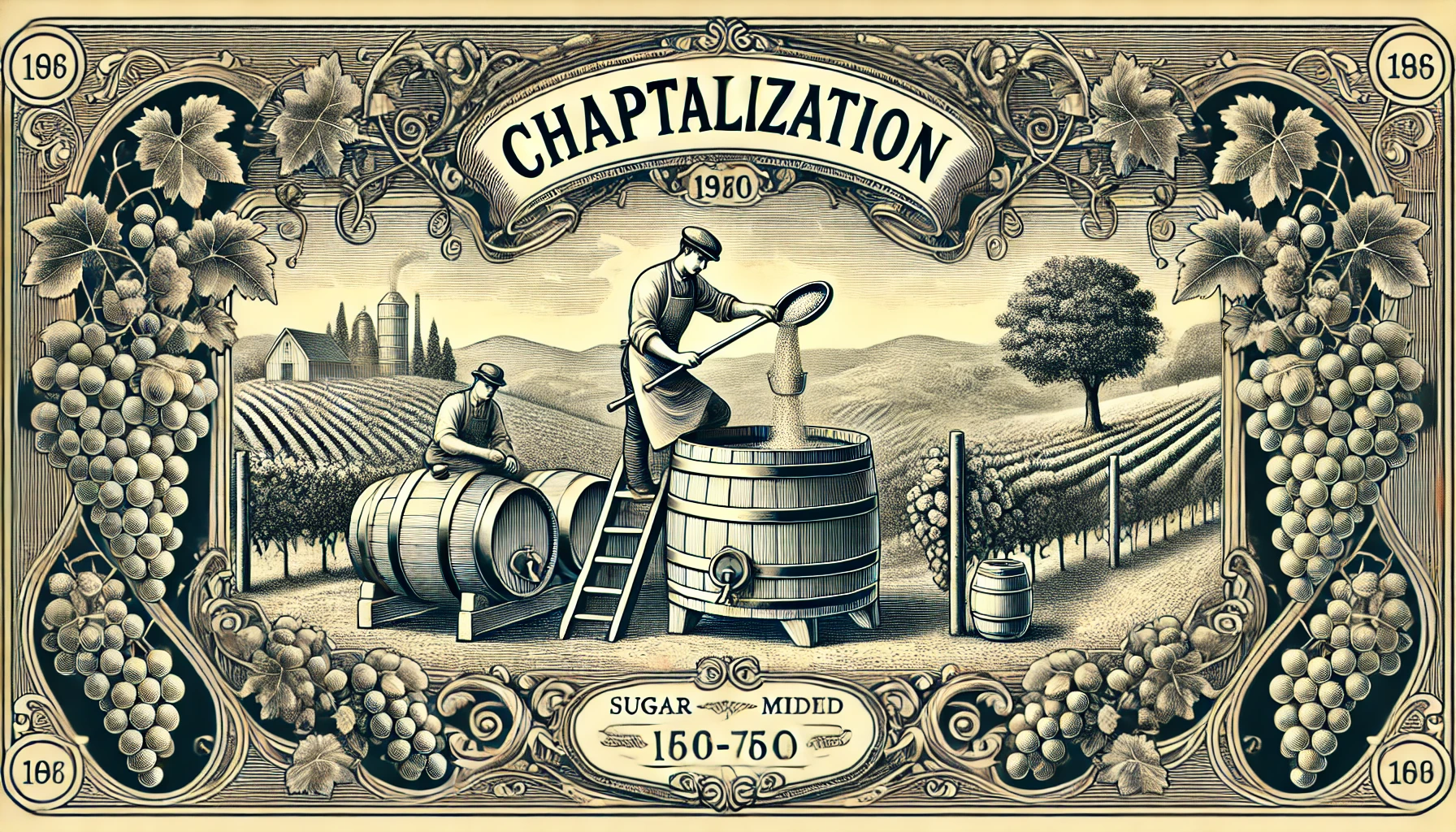
Chaptalization is the process of adding sugar to grape juice before or during fermentation to increase the alcohol content of wine. This method is named after Jean-Antoine Chaptal, a French chemist who popularized it in the early 19th century. Though Chaptal didn’t invent the technique, his studies and writings helped establish it as a common practice in winemaking.
The goal of chaptalization is not to sweeten the wine, but to boost the potential alcohol level. Some wine-growing regions, especially those in cooler climates, may struggle to produce grapes with enough natural sugar due to insufficient sunshine or warmth. By adding sugar to the must (the freshly crushed grape juice), winemakers can ensure that the yeast has more fermentable material, thus creating more alcohol.
The process works because yeast converts sugar into alcohol during fermentation. With more sugar available, yeast has more fuel to work with, resulting in a wine with a higher alcohol content. This technique can make a significant difference in regions where the climate limits natural grape ripeness. For example, parts of France, Germany, and northern Europe.
Chaptalization – A Controversial Practice
Some wine purists believe that it alters the authenticity of the wine and masks the true character of the grapes. In some regions, especially in New World wine countries like the U.S. and Australia, the use of chaptalization is either highly regulated or forbidden. Conversely, in certain parts of France, it remains a traditional and accepted method.
Despite the debate surrounding it, chaptalization continues to be a valuable tool for winemakers facing difficult growing conditions. When used carefully, it can help balance the wine, ensuring that it has the right amount of alcohol without affecting the flavor profile. Most importantly, it allows for more consistent wine quality year after year, regardless of the vagaries of the weather.
Curious about more wine terms and insights? Visit our Wine Wiki section and explore the basic wine terms for expert definitions and tips!